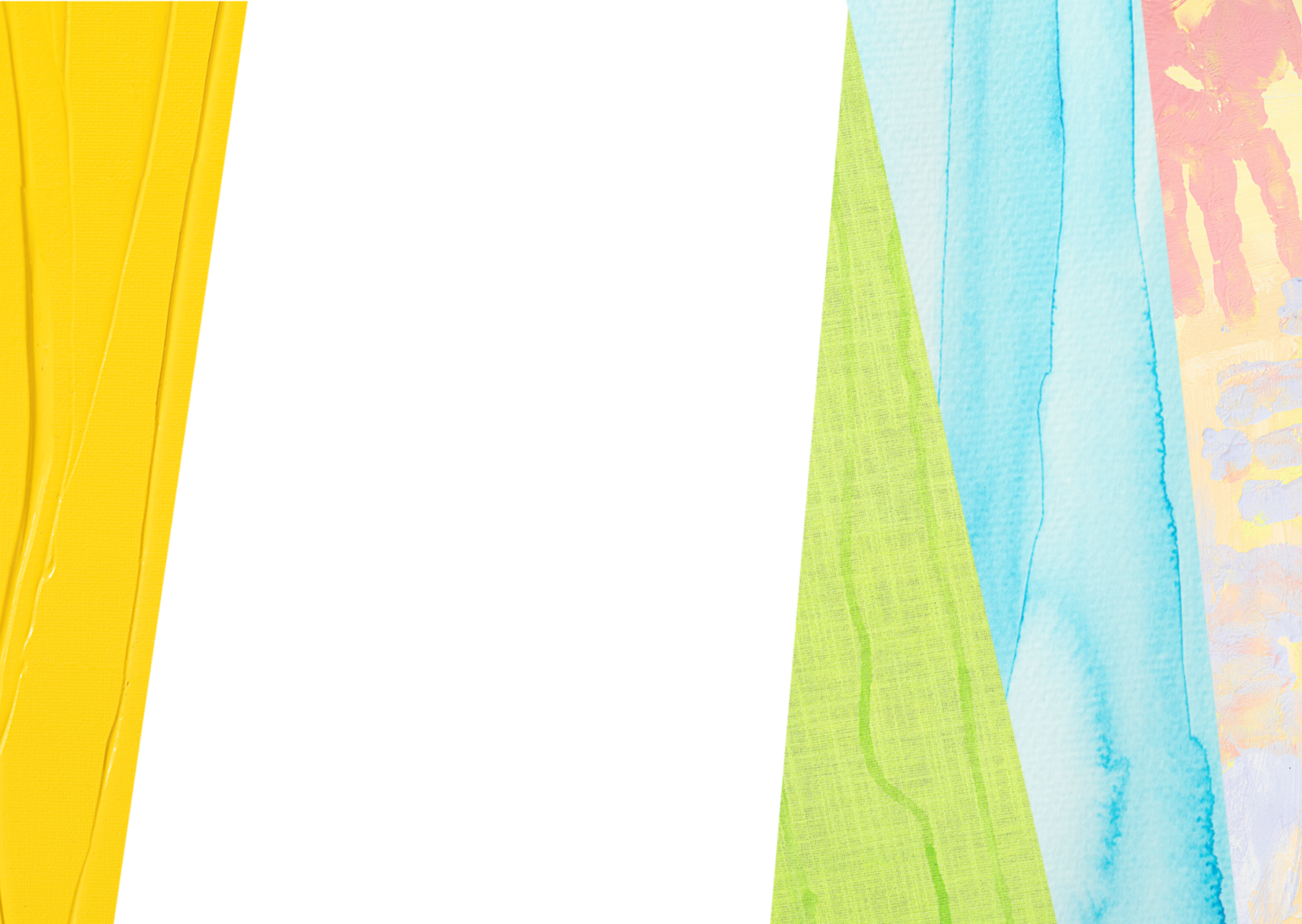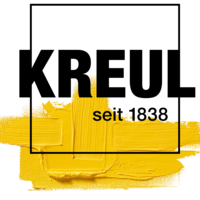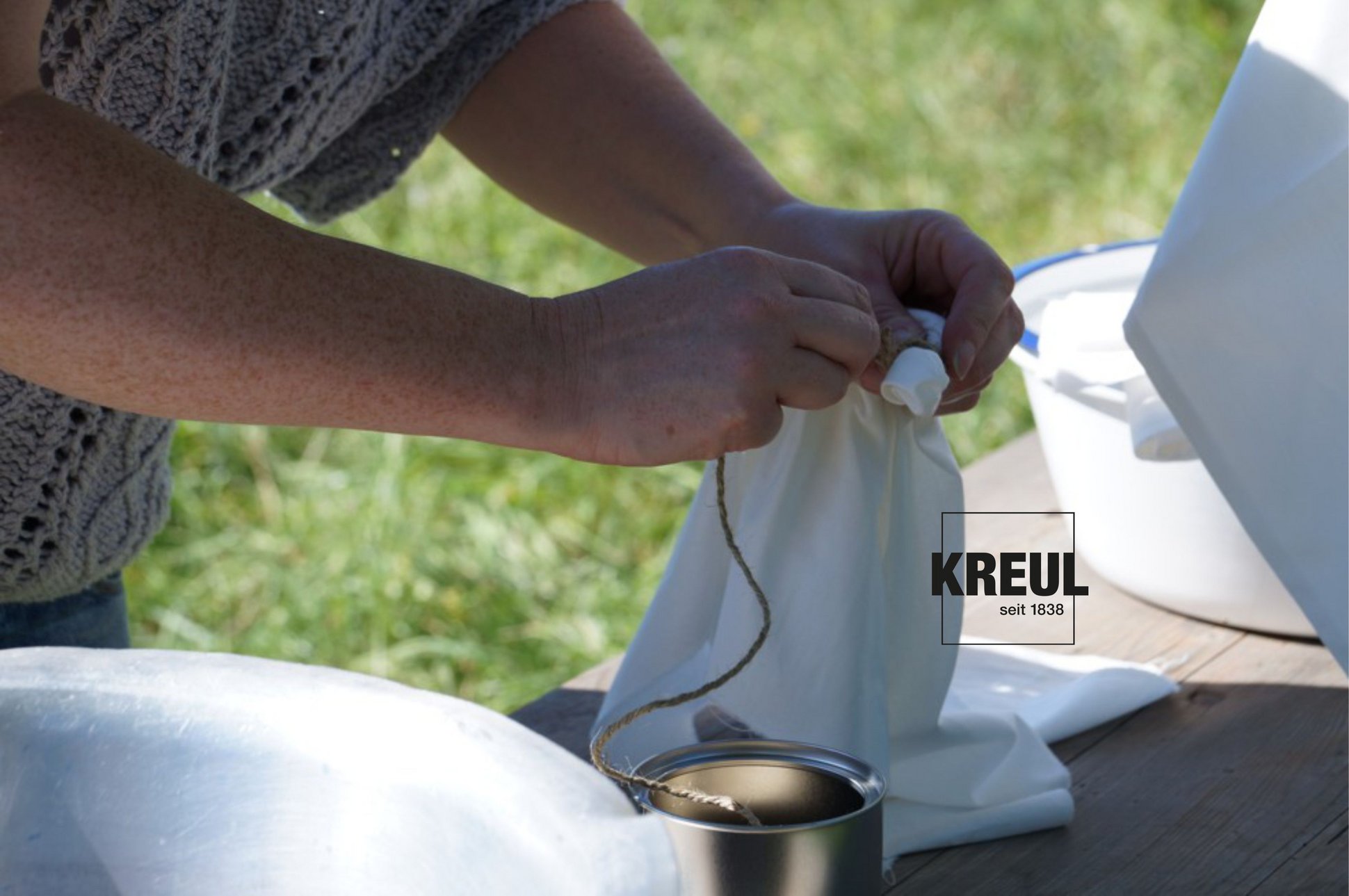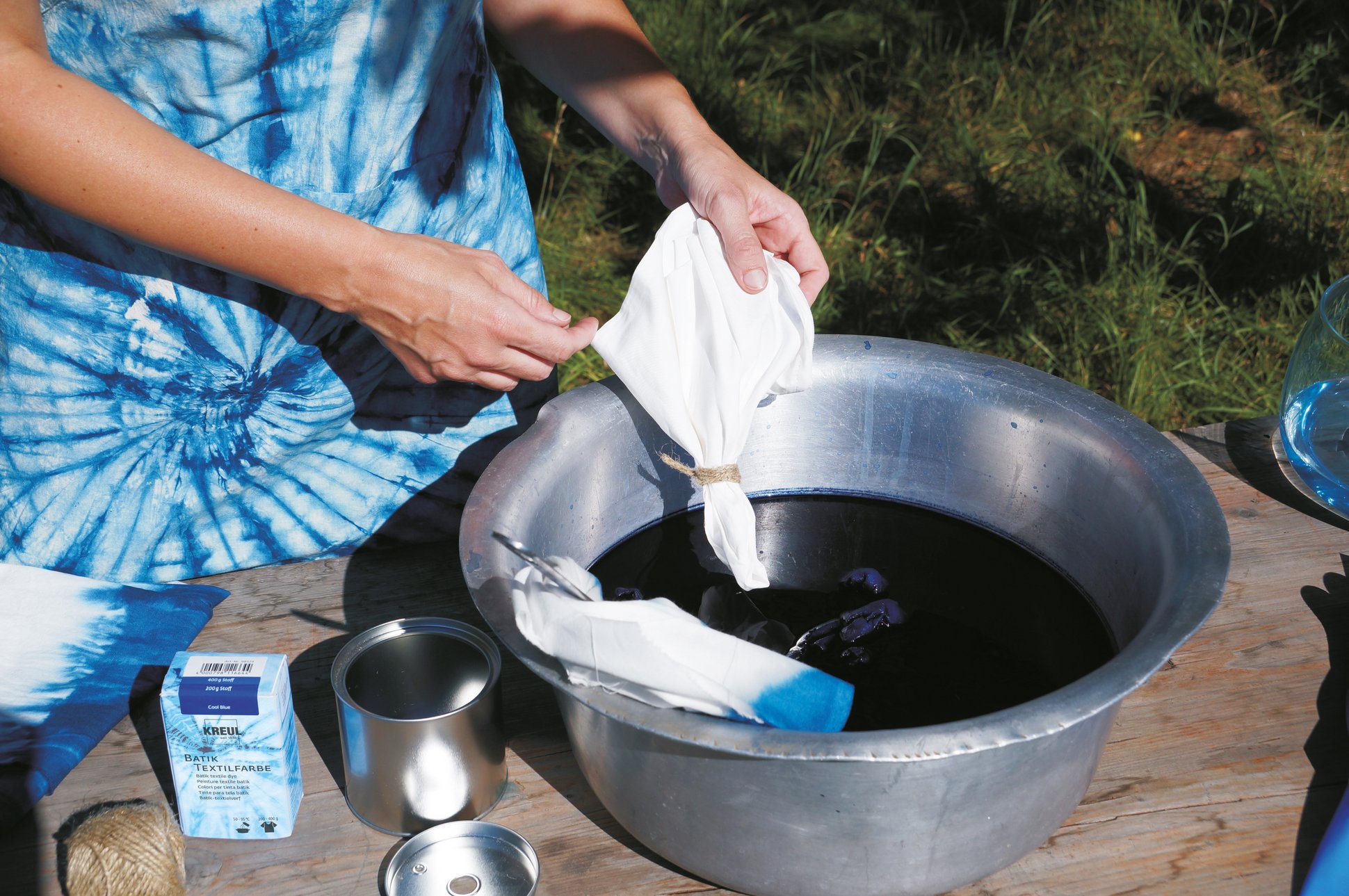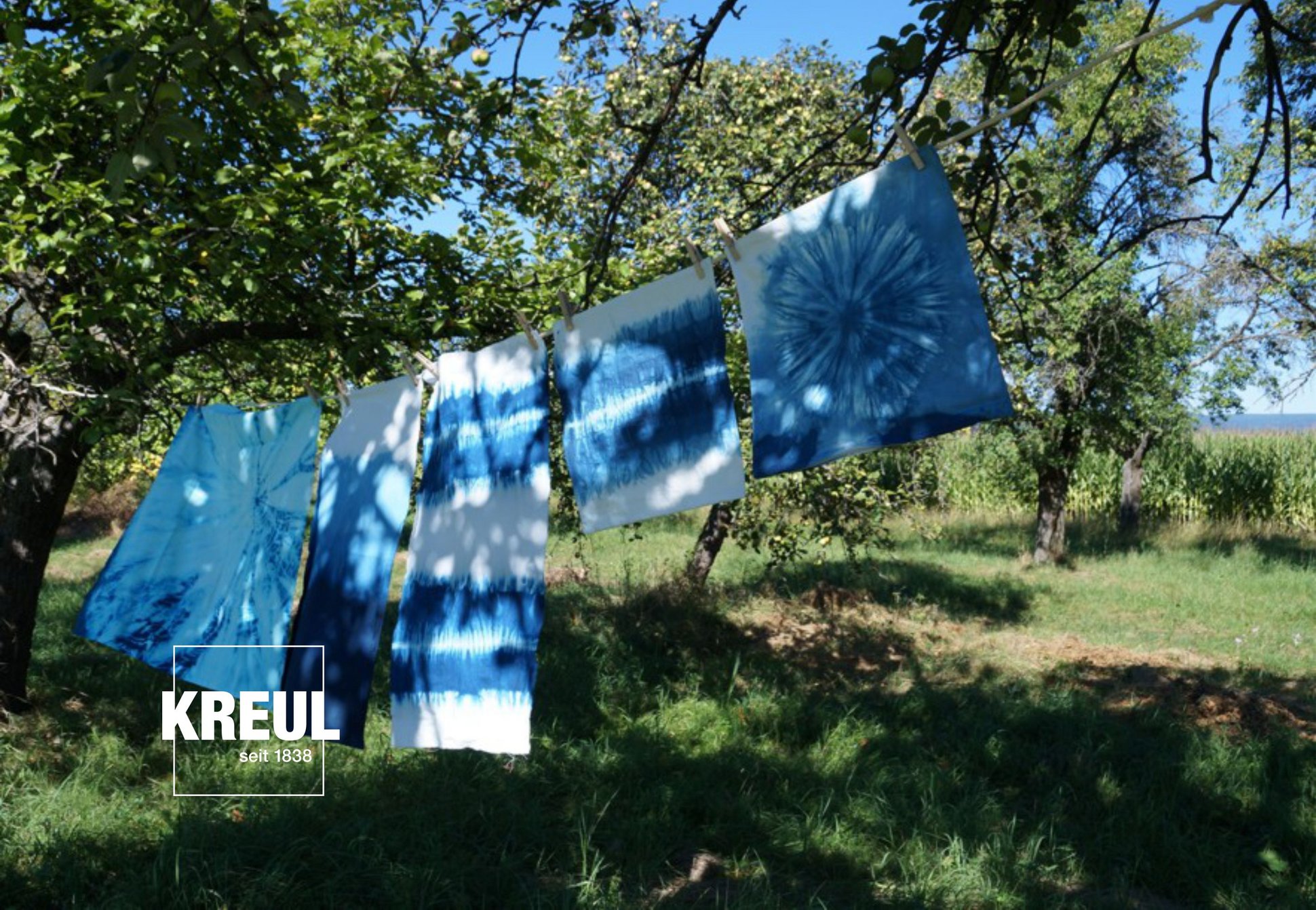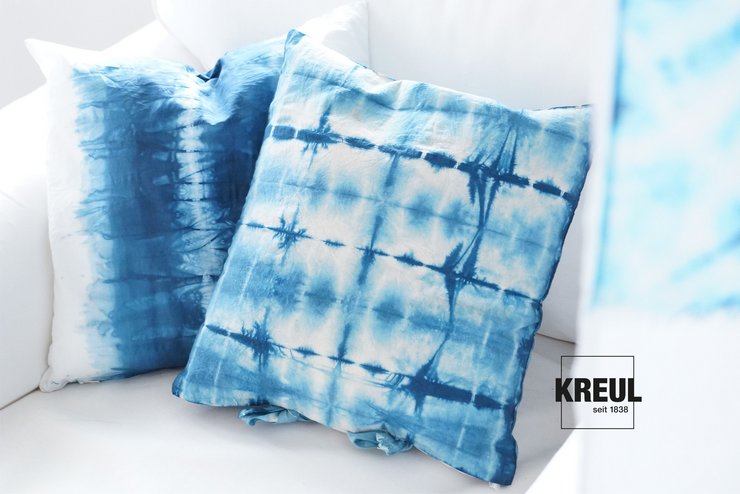
KREUL Upcycling with paint #4: summery batik fabric covers
06/08/2017 |- KREUL Batik Textile Dye
- Ideen für Kreative

Before it starts...
Your fabric must be clean, satin-free and free from fabric softener, finishes and laundry disinfectants.
The random patterns are created by tying, folding and knotting the dry fabric. You can use rubber bands, cable ties or parcel string for this. We have treated the fabrics in four ways.
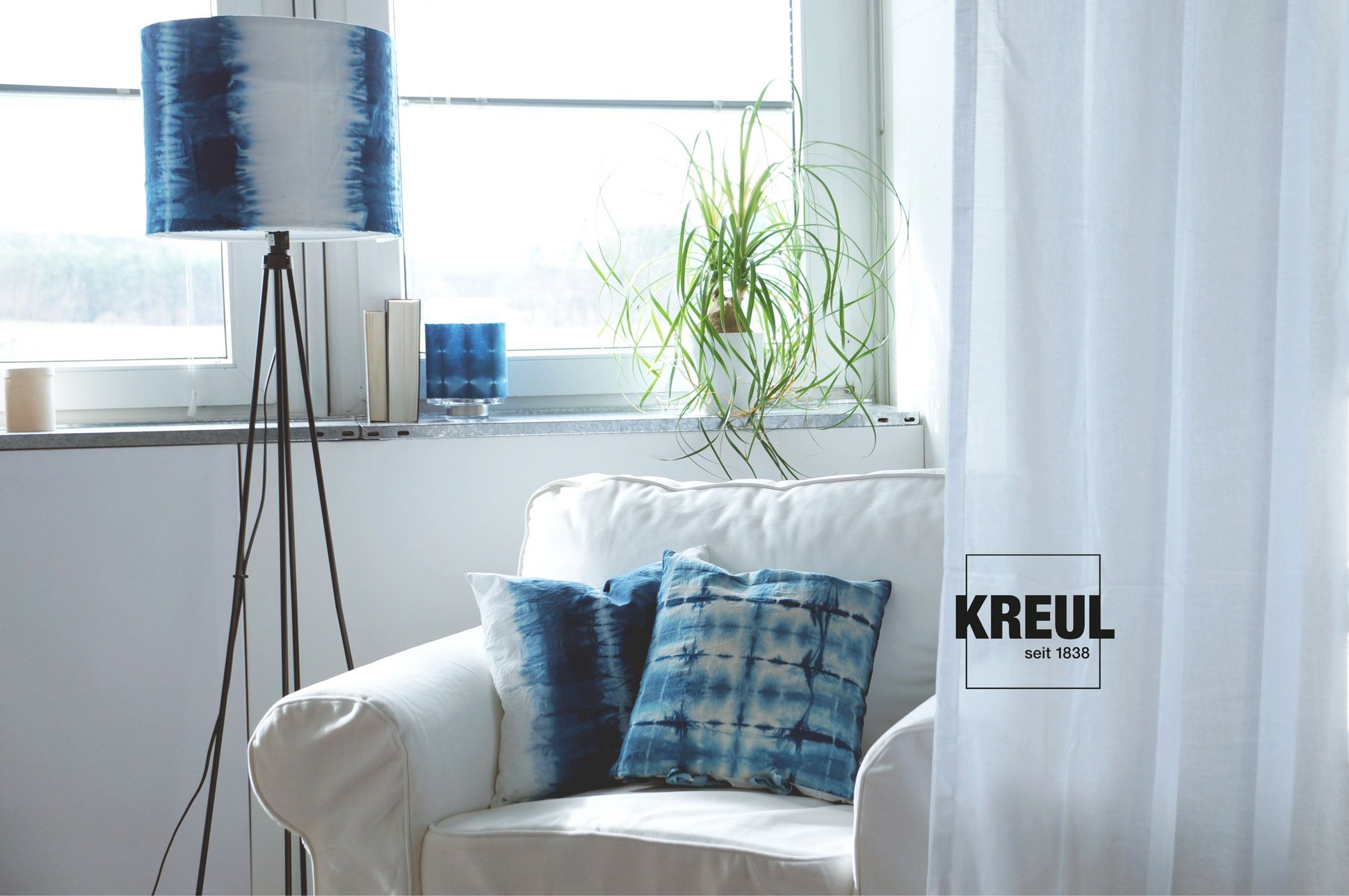
For the right cushion and the lantern: fold the fabric like an accordion, the fold the strip again in the same way. Fix the folded fabric with two rubber bands.
For the left cushion and the lamp: you can gather the fabric and tie in the middle with a string.
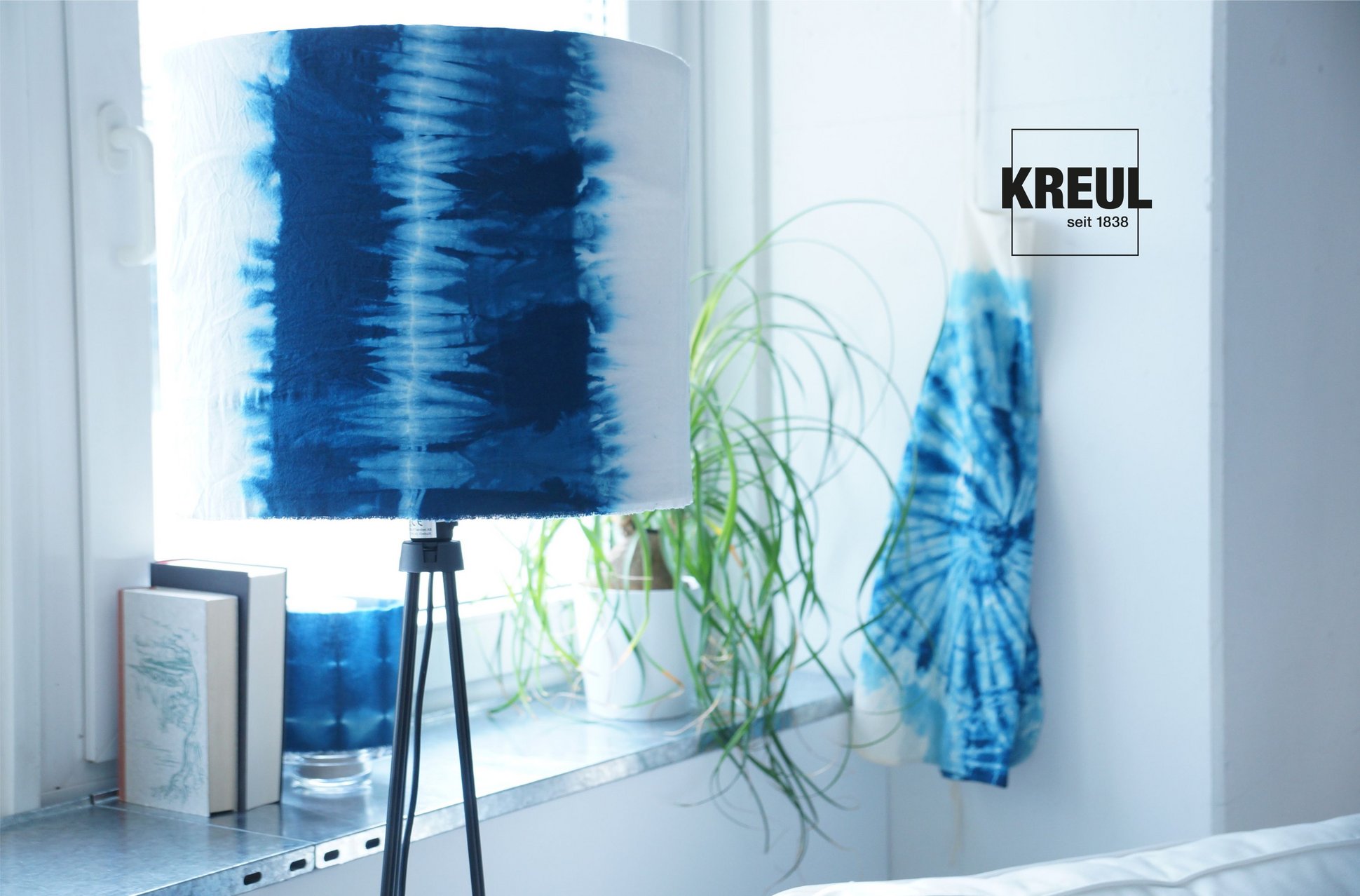
For the apron: dampen the fabric a little and lay it on the table. Then take a small corner with your thumb and forefinger and twist the fabric in one direction until you have twisted the fabric. Fix the fabric with a few rubber bands at regular intervals to form a circular package.
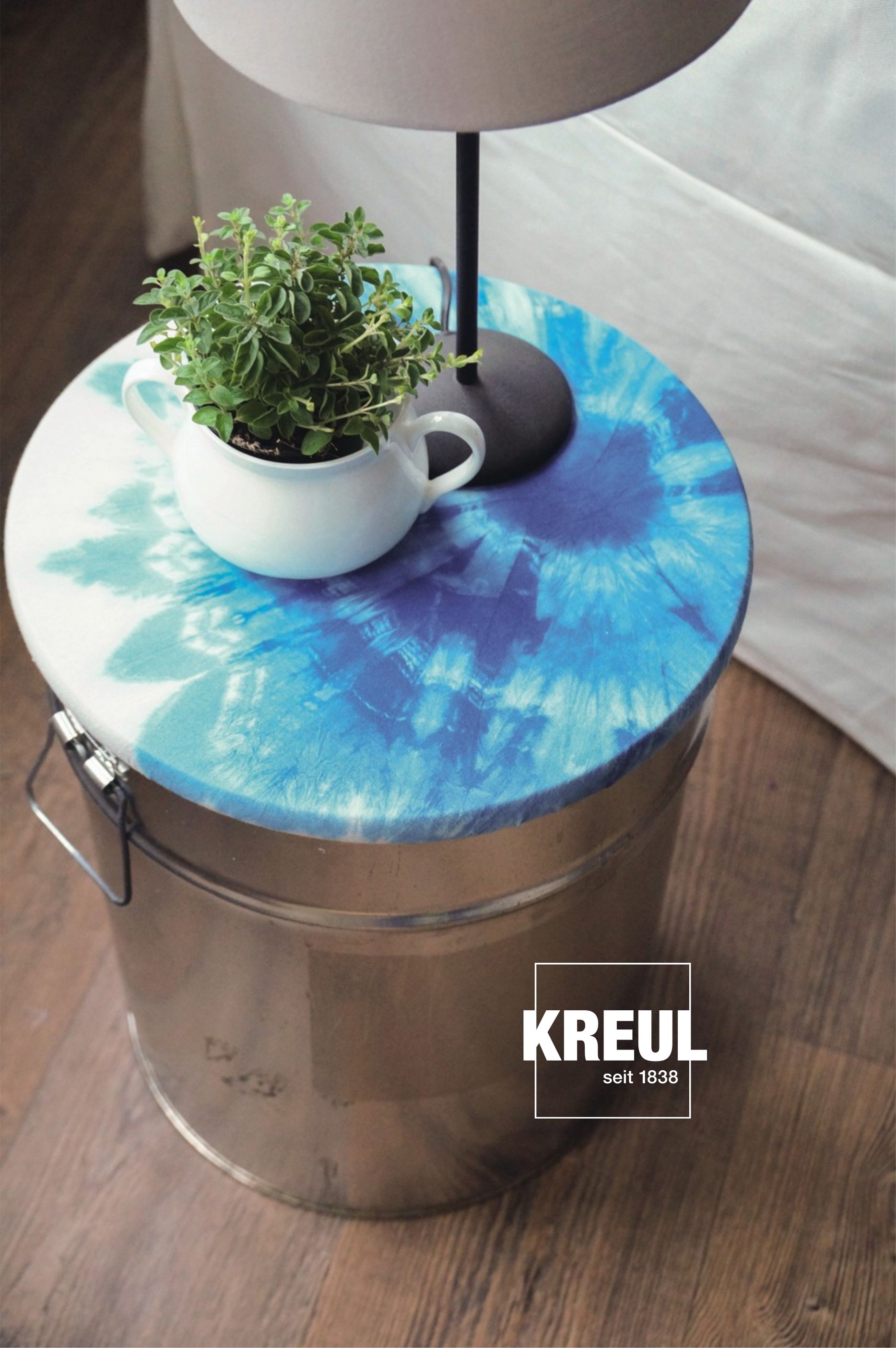
For the barrel lid: take a corner of the dry fabric and twist it in one direction. Wrap the fabric with parcel string as shown in the picture below. Only the tip is dipped into the dye bath. The dry fabric provides sharper coloured contours.
For our summer batik in the garden, we added the KREUL Batik Textile dye Cool Blue and Sound of the Sea to the hot, no longer boiling water. We darkened the blue colour both a little with the shade Black Beauty.
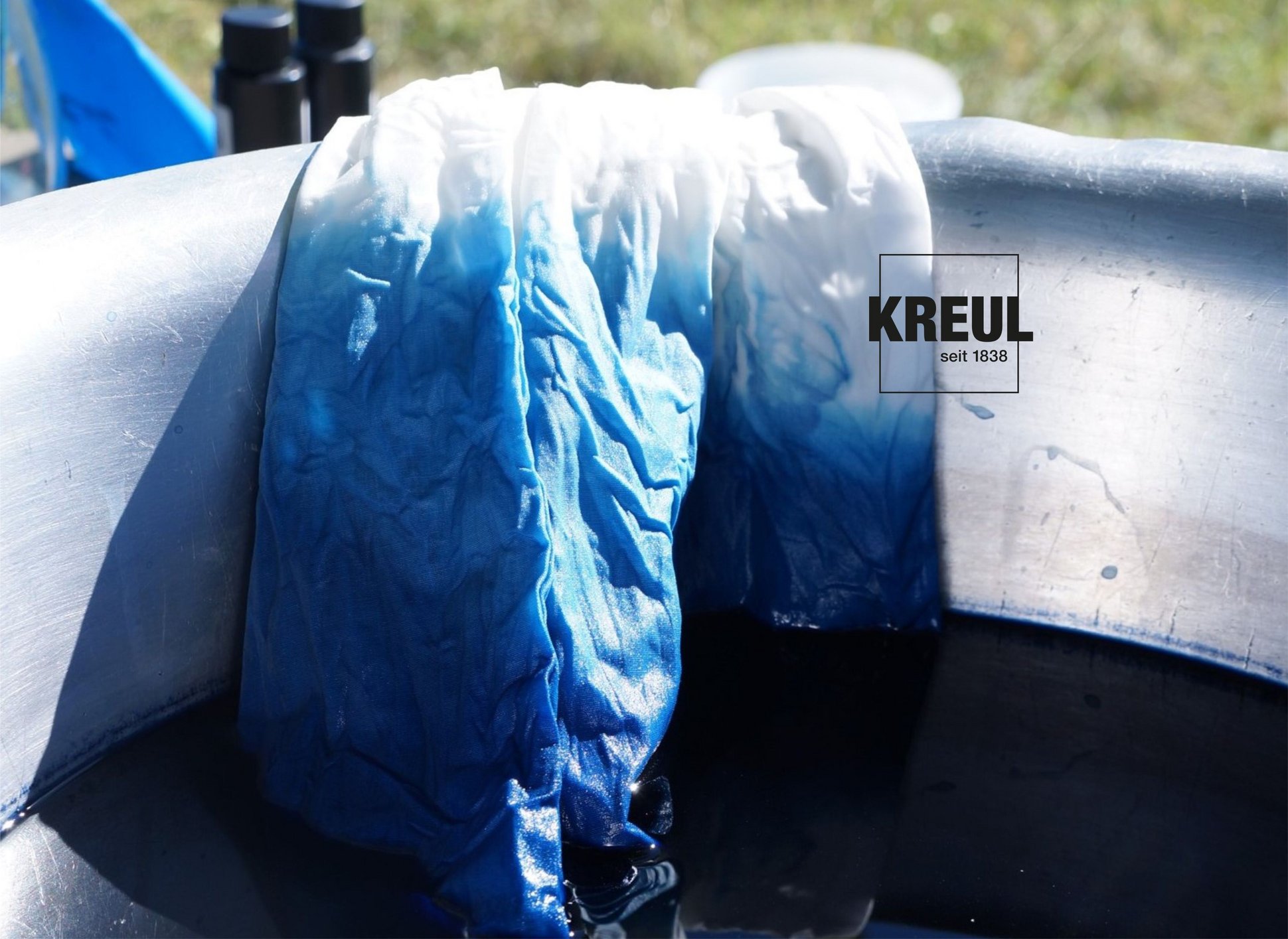
Once the dye bath has cooled down, you can still continue batiking. Let the fabric rest in the dye bath for a while – and always check to see if you like the colour.
So that it looks good even after washing
When washing dyed fabrics, the colours lighten a little. To improve the colour fastness and wash fastness, fix the knotted fabrics in a bath with the KREUL Fixing medium for batik textile paints.
Detailed instructions
Everything you need to know about batik and fixing can be downloaded in this PDF.
Materials used
- KREUL Batik textile paint
- KREUL Fixing medium for batik textile paint
- For preparation: scales, kettle, bucket with base, boiling-in thermometer
- For dyeing: rubber gloves, apron, metal/plastic or wooden stick for stirring
- For drying: clothes horse or clothes line
- For painting techniques with the shibori technique: string, wax, rubber band, clothes peg, adhesive tape, cable ties, etc.
